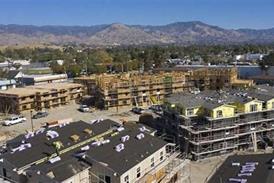Unlisted property funds were the top performers among key asset classes in Australia in 2017, delivering a total return of 23.4%.
They outperformed listed property, which returned 13.2% in the calendar year, while Australian and global equities returned 7.7% and 19.3% respectively, and fixed income just 3.3%.
According to a Zenith Investment Partners, MSCI and Property Funds Association report, all property sectors continued their strong total returns momentum, with office achieving the best return in the 12 months to December 31.
Dugald Higgins, a senior analyst with Zenith, told IPE Real Assets that the out-sized returns in 2017 are not sustainable.
“However, there are numerous drivers to this performance, and it is not yet known when these drivers will actively diminish,” he said.
“So it is difficult to determine how much longer this period of elevated returns will continue.
“In an environment where we have high yield spreads between property and the risk-free rate, strong inflows in foreign capital and supportive capital markets, it is likely that above average returns will result.
“These factors need to be coupled with strong rental growth in the key markets of Sydney and Melbourne, where office vacancy is low and expected to remain low in the short term.”
However, Higgins warned that any material change to the current drivers was likely to result in a pull back.
“The severity of the change for fund managers (as well as investor risk appetite) will determine whether any unwinding is orderly or disorderly,” he said.
Unlisted property funds returned a 36.8% in 2015. The average annual return since 2013 was 22.2%.
Higgins said the past five years had been extraordinary, driven by yield-seeking and a tsunami of cheap debt washing through global markets.
“These are the sort of numbers seen at the peak of a cyclical high. They should not be considered normal,” he said.
“Of course, ‘normal’ is an elastic term. Markets can be ‘abnormal’ for long periods of time.”
Higgins said the rate of compression in cap rates had already started to slow.
“The speed at which cap rates compressed (on a rolling quarterly basis) from the bottom of the market at the start of this decade peaked in December 2015,” he said.
“Since then, while still showing compression, the rate has slowed.”
Unless there was an extraordinary lift in rents or vacancy rates in key markets, among other factors, further cap rate compression was likely to be contained, if not absent, he said.
The office sector had been the most sought-after asset recently due to strong prime rent growth in key markets. But ongoing demand for office could not be assured.
In future, investors could change their asset strategies, he said.
“Often, when the market nears its peak, buyers leave the core part of the market to chase higher returns in fringe assets or higher-risk strategies, such as active repositioning or development.”




















No comments yet